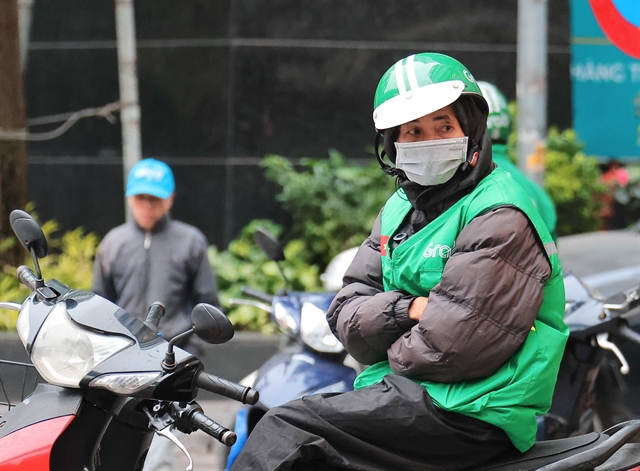Cold spell intensifies, bringing severe cold and frost
Society – Economy - Ngày đăng : 11:26, 10/01/2025
 |
| A Grab driver huddles while waiting for a customer in the cold.— VNA/VNS Photo Hoàng Hiếu |
HÀ NỘI — Due to a cold spell, temperatures in the northern region and Thanh Hóa Province are forecast to drop significantly between Friday night and Sunday, with the mountainous areas experiencing unusually cold temperatures and potential frost.
The National Centre for Hydrometeorological Forecasting said on Friday morning that temperatures in the northern region during the cold spell are expected to range between nine and 12 degrees Celsius, with mountainous areas seeing temperatures between six and nine degrees Celsius.
Some high-altitude areas may experience temperatures below three degrees Celsius. In the north central region, temperatures are likely to be between 10 and 13 degrees Celsius, while areas stretching from Quảng Bình Province to Thừa Thiên-Huế Province will see temperatures ranging from 14 to 17 degrees Celsius.
Hà Nội will also experience chilly weather, with the cold intensifying on Friday night through Sunday. The minimum temperature during the cold spell is expected to be between nine and 12 degrees Celsius.
As it gets colder, localities from Hà Tĩnh Province to Bình Định Province are expected to be hit by rain, showers and isolated thunderstorms, with some areas experiencing heavy rainfall.
In high-altitude regions, there is a risk of frost, icy conditions and hoarfrost.
The centre also said that thunderstorms, along with potential lightning strikes and strong winds, could cause significant disruptions, including damage to crops, trees, buildings, roads and other infrastructure.
Heavy localised rainfall could lead to flooding in low-lying areas and flash floods near small rivers and streams. Landslides may also occur on steep slopes.
Strong winds and high waves at sea could also affect the operation of vessels and other maritime activities.
The severe cold, frost and hoarfrost could also pose a threat to crops and livestock, potentially damaging agriculture.— VNS
